 Are you an art and craft enthusiast looking for a new avenue to start your business? You must have come across shiny and crystalline materials being used in charms, keychains, and jewelry and wondered, ‘what is this product, and how is it used?’
Are you an art and craft enthusiast looking for a new avenue to start your business? You must have come across shiny and crystalline materials being used in charms, keychains, and jewelry and wondered, ‘what is this product, and how is it used?’
UV Resins are eye-catching and versatile products, providing users and customers a wide variety of usage across different areas.
UV Resins are extremely popular in markets worldwide and readily employed by those looking for avenues to start small businesses. They are also readily used in coating, inking, and adhesive industries.
Given their synthetic and dynamic constitution and the multitude of applications, people have grown inquisitive in wanting to know more about these products and the extent of their usage.
You might also be interested in knowing more about these UV Resins, their features, and their specificities. Don’t worry because we’ve got you covered!







We earn a small commission from your purchase at no extra cost to you. It helps keep the site running. Last update on 2024-04-17 / Affiliate links / Images from Amazon Product Advertising API/ More Info
Must-Have things when Working with UV Resin –







We earn a small commission from your purchase at no extra cost to you. It helps keep the site running. Last update on 2024-04-18 / Affiliate links / Images from Amazon Product Advertising API/ More Info
Table of Contents
4. LET’S RESIN Clear UV Resin For Polymer Clay –

It is made from high-quality non-toxic material, has low odor, and has a thicker consistency that covers the clay nicely without a runoff, but it’s the least impressive when it comes to curing. You have to place it under UV light for 4-5 minutes, but it comes out tacky when it comes.
You then have to keep it outside for a couple of hours/day to let it fully cure. It’s a lot more waiting here, which makes no sense as you’re getting UV resin to save time. But if you aren’t, this is a great option. It cures crystal clear and also takes mica or metallic powders.
But Alcohol inks are a big NO as they don’t mix that well. I have noticed little to no shrinkage, which is impressive. But what’s even more impressive is that it cures to a scratch-resistant, yellow-resistant, glassy surface.
So, your clay will indeed shine like glass after an excellent waiting time. The best part here that may lead you to take a chance is that it comes with a 60 days exchange/money-back guarantee, so nothing to lose, you see.
Pros
- The consistency is thicker, so it doesn’t run off
- Made from high-quality non-toxic material
- It has a very low odor and minimal shrinkage
- You can mix mica and alcohol inks to add color
- It cures to a scratch-resistant, yellow-resistant, glassy surface.
- It comes with a 60 days exchange/money-back guarantee
Cons
- The cure time is long, making it good for “patient” people
- UV Resin: Clear epoxy resin for casting and coating projects
- Light Cure: Transparent resin cures with sunlight or UV light
- Durable: Resistant to wear and tear for long-lasting projects
We earn a small commission from your purchase at no extra cost to you. It helps keep the site running. Last update on 2024-04-17 / Affiliate links / Images from Amazon Product Advertising API/ More Info
3. DecorRom Ultraviolet Curing Resin for Polymer Clay –
I have used this to glaze my polymer clay jewelry pieces, and it goes on crystal clear and hard under UV light in just 60-90 seconds. I love the consistency here; neither too thick nor too runny, just the perfect one for polymer clay.
It provides excellent coverage without running or giving off many bubbles, but make sure to pour it slowly and close to your clay; this way, less air will be trapped, and fewer bubbles will appear. Like most UV resins, this, too, is self-leveling and self-degassing.
So you have to worry less about the bubbles and application. When some bubbles appear, use a torch, and they’ll disappear. It’s very easy to use; just squeeze it from the nozzle onto the piece and distribute it with a toothpick.
Even though it has a chemical-like smell, it’s safe to use as the material is non-toxic. Still, I’ll recommend being in a well-ventilated area as the smell increases while curing. Thankfully, it cures fast, and the smell dissipates after curing, so the struggle isn’t for long.
This resin cures clear, but you can add mica or alcohol ink to add some color. The right UV light will cure quickly to a scratch-resistant, stain-resistant, and yellow-resistant surface. You can get the 200g bottle if you want more quantity.
Pros
- It cures clear quickly and has the perfect consistency for Polymer Clay.
- Cures to a scratch-resistant, stain-resistant, and yellow-resistant surface.
- It’s self-leveling and self-degassing
- Very few bubbles dissipate using a torch
- Made from high-quality non-toxic material
- You can add mica or alcohol ink to add color
Cons
- The chemical-like smell that increases under UV light
- EASY TO USE - Different from AB resin which needs to mix and takes long curing time, our art resin is ready to...
- PREMIUM - Ultraviolet resin cures crystal clear, glassy finish that provides excellent scratch resistant,...
- WIDELY USED - The clear UV glue can be used for casting and coating applications, such as crafts decorations,...
We earn a small commission from your purchase at no extra cost to you. It helps keep the site running. Last update on 2024-04-18 / Affiliate links / Images from Amazon Product Advertising API/ More Info
2. Limino Crystal Clear Ultraviolet Curing Epoxy Resin for Polymer Clay –
This UV resin competes head-to-head with Miraclekoo(#1 here). I had a hard time choosing the first position, so don’t underestimate this one. To your knowledge, it’s among the most popular UV resin in the market, best known for casting Jewelry, Keychain, dice, etc.
While it’s amazing for casting, I want to see how good it coats, and unsurprisingly it did a fantastic job. I used this to cover polymer clay earrings and charms, and it cured hard, clear, and shiny. Even though it’s a bit thinner, it doesn’t pull away from a polymer clay form’s edges.
It’s made from high-quality non-toxic materials that are safe to work with but sit by an open window as the odor isn’t enjoyable. The plus point is that it gets very few bubbles that eventually pop themselves, thanks to the self-degassing property(not all of them).
But you can fasten the process by using a heat gun. Once the resin settles a bit, the bubbles will float to the top, then use a heat gun to make it clean and clear. This thing cures crystal clear, but you can use mica and alcohol inks to add some colors.
Once your pieces are ready, put them under UV Lamp(36w minimum) for 2-3 minutes, and it’ll cure hard. If it’s still tacky, put it under the sunlight for 20 minutes, and it’ll cure to an anti-scratch, anti-stain, and yellowing-resistant surface.
It does have some shrinkage, but not terrible. Keep in mind that it gets super hot after curing, so leave it for a couple of minutes to cool down, and then take it out.
Pros
- It cures clear, hard, and with a glaze.
- You can mix mica and alcohol ink to get color.
- The thin consistency makes it easy to use
- It’s self-leveling and self-degassing
- Made from high-quality non-toxic materials
- Cure to an anti-scratch, anti-stain, and yellowing-resistant surface.
Cons
- The smell isn’t enjoyable, but it goes away after curing
- CONVENIENT & EFFICIENT - Do not need to measure, mix the ratio or take long curing time like AB resin. Our UV...
- PREMIUM - Crystal Clear UV resin with self-leveling and self-degassing properties can cure smooth crystal...
- SAFE - Our hard type craft resin is imported from Japan and made from high-quality and non-toxic materials....
We earn a small commission from your purchase at no extra cost to you. It helps keep the site running. Last update on 2024-04-18 / Affiliate links / Images from Amazon Product Advertising API/ More Info
1. Miraclekoo Crystal Clear UV Resin For Polymer Clay –
When it comes to Polymer Clay, this is my go-to. It’s clear, gets minimal bubbles, has UV inhibitors, and most importantly, cures with a nice glassy finish. It has a medium viscosity, so it domes well on flat beads.
I apply it to my polymer clay jewelry and charms, and it shines like glass. It’s effortless to use; even if you are a beginner, you’ll have no problem whatsoever. I love that it’s self-leveling and gets minimum bubbles.
Just make sure to pour it slowly and if in case you got some bubbles, use a toothpick or a heat gun to tackle them down. Although it’s clear, you can mix mica and alcohol inks to add some vibrant colors.
Remember, the darker the color added, the more the curing time. It works flawlessly and is available in seven size options, but the only drawback is the odor. It has a strong yet bearable odor that completely dissipates after curing.
Just turn on the fans, open the windows, and you’re good to go. Once poured, you can cure it under a UV Lamp, sunlight, or UV Flashlight(a.k.a Blacklight). It will cure an anti-scratch, anti-stain, and yellow-resistant surface.
It needs around an hour in direct sunlight, 4-5 minutes under a Lamp with 10-20 minutes in the sun, but only 1 minute with a UV Flashlight. So, if you want a speedy cure, get a Blacklight; otherwise, stick with a Lamp(36 watt or 48 watt ).
Pros
- It cures clear with a glassy finish
- The UV Inhibitors inside prevent yellowing
- It gets minimum bubbles that are easy to get rid off
- You can mix mica and alcohol inks to add colors
- It’s available in seven size options
- You can choose the cure time depending on the needs
- It cures to an anti-scratch, anti-stain, and yellow-resistant surface
Cons
- The smell isn’t so good, but it vanishes after curing
- EASY TO USE & EFFICIENT:No mixing like AB resin which needs to mix and take long curing time , uv resin...
- ULTRA CRYSTAL CLEAR & RESIST YELLOWING:After thousands of formulation adjustments, our UV resin premium...
- HARD AS ROCK & GOOD STABILITY: After various studies and comparisons and adjustments,our UV resin premium...
We earn a small commission from your purchase at no extra cost to you. It helps keep the site running. Last update on 2024-04-18 / Affiliate links / Images from Amazon Product Advertising API/ More Info
Let Your Creativity Run Free!
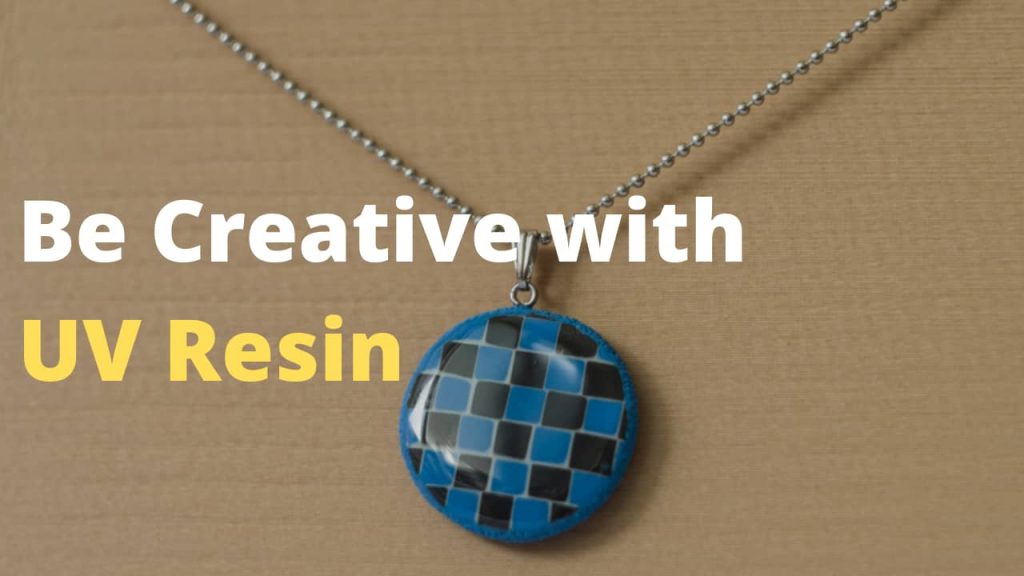
UV Resins are some of the most popular products globally. They’re attractive to look at and provide the most beautiful decorations for your jewelry.
Given their clear and translucent surface, these resins can be mixed with colors made into molds and keychains through easy-to-use means and processes. They also have a smooth surface, which is conducive to more intricate designs and decorations.
You can engrave your UV Resins and add glitter and other ornamentations to make them even more alluring. They are also great items for using preservative times like flowers, leaves, etc., as decoration, making them look beautiful.
Using molds can also help make different designs and shapes out of UV Resins, which can be used for various display purposes. UV Resins are also used in various other applications such as painting, coating, adhesive, and inking.
They have a high productivity performance and boast of easy use and application. They are the best choice for fast-drying and curing.
Their usage is extensive in printing, potting, and encapsulating sensitive electronics. They can be used on scratch resistance wood, concrete, and other surfaces and UV curable adhesive qualities.
Types Of Resins –
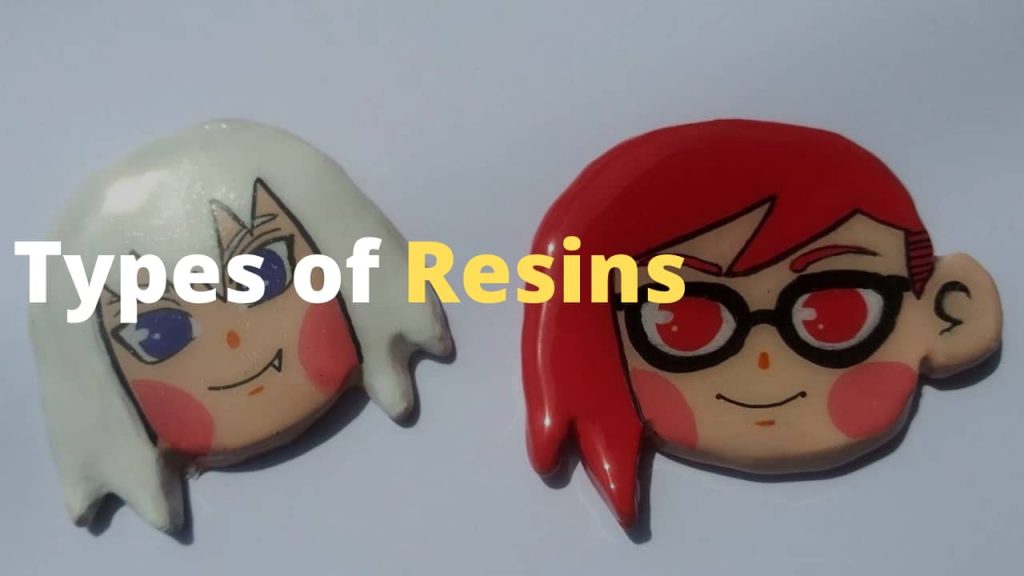
While looking towards resin art, you must narrow down the purpose of your resin purchase. It would help to familiarize yourself with the different resin variants present in the market and their different qualities.
Various resins boast different salient features.
1. Polyester-Based Resins –
These resin products provide excellent resistance against chemical and heating elements. They are also flexible and extensively resistant to aging and weathering. They have a polyhydric base.
2. UV Resins –
These reins are also very popular for making intricate designs. They provide you with impressive gloss control. UV Resins are ready to use and allow for a short curing period.
UV Resins are also remarkably non-toxic and some of the most comfortable products to use.
3. Acrylic resins –
These resins boast a thermoplastic base. They also provide you with features such as excellent tensile strength and intense UV radiation qualities. They are also extremely weatherproof and durable.
4. Pure Epoxy –
These resins are also widely popular, consisting of resin material and hardening components. They allow for less shrinkage ability.
These resins have significant strengthening and adhesive qualities owing to their chemical makeup. They also tend to cure at a slower rate than other varieties.
Types of Resins To Use With Polymer Clay –
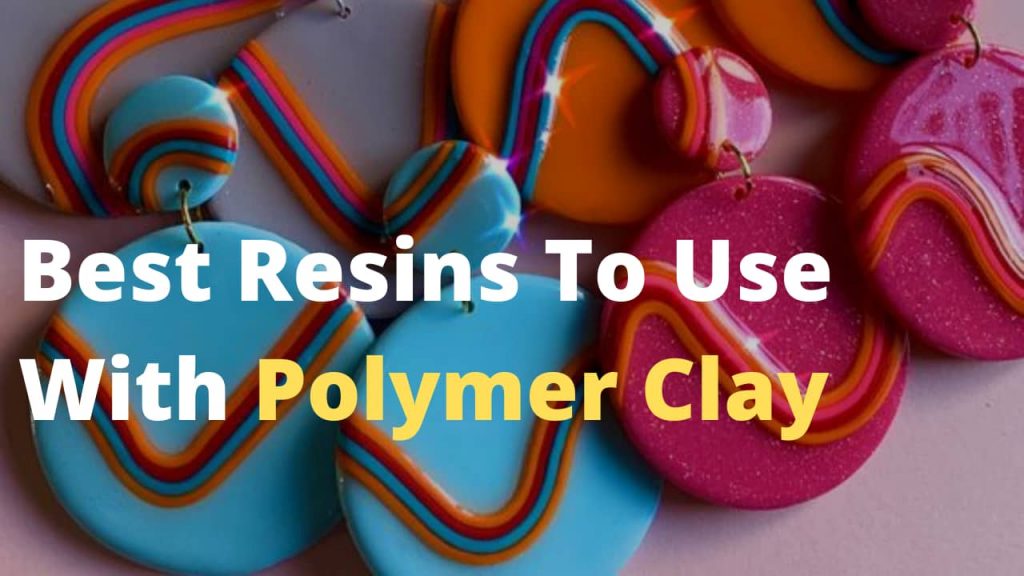
Polymer Clay is a hardening clay that can be employed in many art and craft activities. It has a PVC base and supports gel-like working qualities. It is readily employed in commercial applications such as museum displays as well.
Two distinct types of resin are used along with polymer clay. Both of these are used as coating agents to provide protection and a glossy finish. These are UV Resins and Epoxy Resins.
Preparation And Process For Preparing UV Resins –
The UV Resin package you choose comes with all the necessary items to prepare your resin project. We are listing out the process for the same so that you can get started with your resin art as soon as possible!
You can check the full process of using UV resin on polymer clay for the best cure.
1. Materials Required –
1. UV Lamp or flashlight for curing
2. Silicone Casting Molds
3. Colour Pigments and other decorative additions
4. Mixing Cups and stirrers for proper mixing
5. The instruction manual that comes complimentary with the Resin package
2. Process –
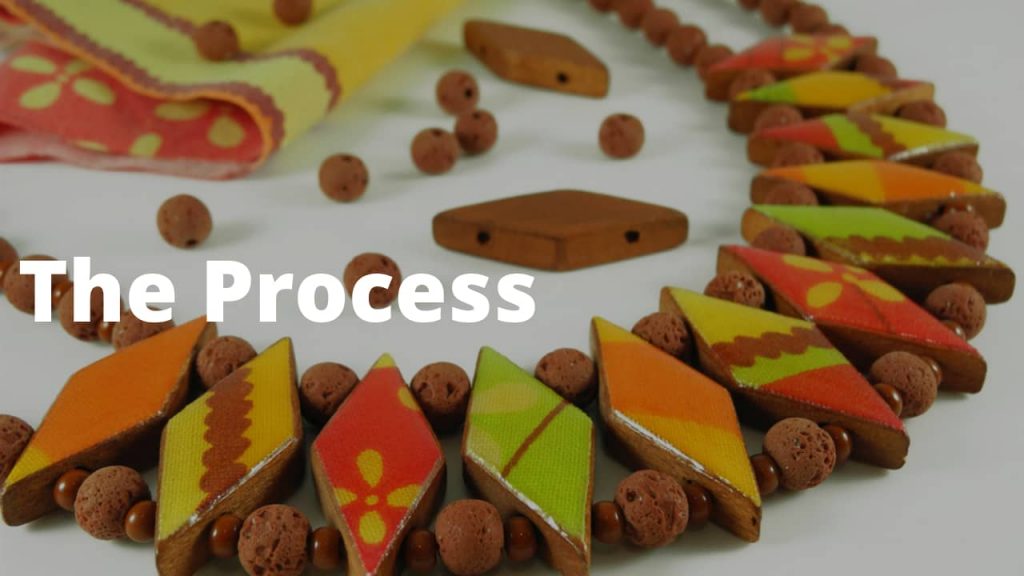
Cover your workstation with foil paper and keep all the above items within easy reach for proper usage and time management. Decide if you want to use molds for different designs or use colors for decorative purposes.
Put some resin liquid with some color pigment into a mixing cup for the same. Pour the UV Resin into the silicone mold in a thin layer of approx 3mm. Several such layers have to be applied.
Different decorative additives such as dried flowers, glitter, and flakes can be put on or between these resin layers. Using the UV Torch to dry the resin mixture is the most critical step of the process.
You should use a strong UV Lamp or torch for this purpose. You have to hold this torch very close above the resin layer for a few seconds.
You can check the curing process by pushing a toothpick between the layers. Repeat the process till the mold is filled to the brim. The casting can be removed when the resin is cured under the light.
Common Issues Faced –
Art enthusiasts who are just beginning their resin adventures can face several common troubles and difficulties as they are starting out. We have listed out some of them for you so that you are in a better position to deal with them if required :
1. Yellowing –
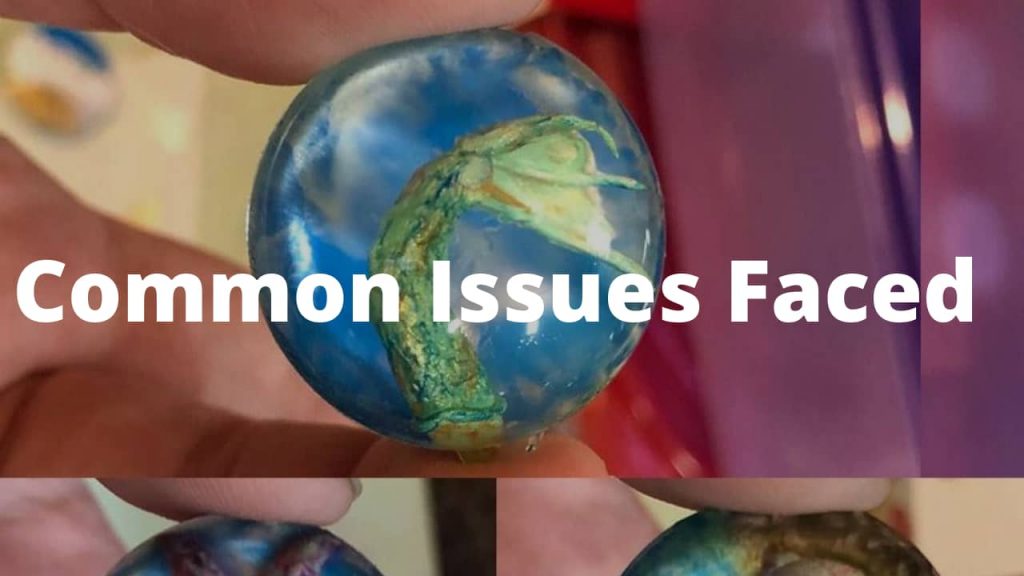
UV Resins tend to have a short shelf life. Yellowing is something that is highly prevalent when using these resins for more extended periods. The uncured resins can turn yellow in their containers.
Sunlight exposure can also lead to this. This is highly apparent, especially when using the resins with polymer clay. The best preventive measure for this is to keep your resins away from sunlight or to use them along with stabilizing agents.
2. Improper Mixing –
Improper mixing can lead to issues in hardening and curing, with uneven surface levels causing a threat to your resin mixture. To prevent this :
1. Make sure to measure the contents thoroughly.
2. Pour the components into clean and disposable cups
3. Use a scooping motion to mix the components
4. Using a new stirring stick can help eliminate previous mixing errors.
3. Bubbles –
Bubbles can pop up in your resin mixture during the pouring process or even result from improper mixing. This can be problematic for your final resin product. You can take the following steps to prevent this from happening –
1. Let the resin piece settle and self-level so that the bubbles come up to the surface.
2. Use a heat gun or a candle lighter. These can help pop the bubbles that collect on the surface and help level your mixture again.
3. After this, let your mixture cure.
Advantages:
1. UV Resins cure at a faster rate than other resins.
2. The laborious mixing of hardening components and resin is no longer required.
3. No time constraint during the processing period because the usage of UV light for curing is conducive.
4. They have various applications across different avenues and industries.
Disadvantages :
1. UV Resins have a shelf life of only around six months.
2. The cast layers are thin, around 3-4mm, which causes them to be fragile in usage.
3. They are more expensive in comparison to other available options.
4. They also use unique accessories such as specific UV Lamps for curing purposes.
FAQs –
What Are Some Of The Safety Precautions To Be Kept In Mind While Using UV Resins?
Certain precautions need to be kept in mind while using UV Resins. Make sure that your workplace has proper ventilation. Always keep protective gear such as safety goggles handy.
Make sure to wear thick clothing and wear disposable gloves while preparing the mixture. Protecting yourself against fumes is also necessary. Make sure that you are wearing a NIOSH-approved respirator for the same.
Are UV Resins Toxic?
UV Resins are not acutely toxic; however, their highly allergenic qualities can irritate prolonged exposure. It is necessary to cover yourself thoroughly before proceeding with your resin preparation.
The resin components’ chemical makeup can cause allergic reactions to the eyes and skin, and hence it is necessary to make sure that you are always equipped with protective gear for the same.
How Long Does UV Resin Take To Cure?
The process of curing UV Resins depends on several factors. The proper time frame required depends on external factors such as the type of items to which the resin is embedded and the size and thickness of the material.
For smaller items such as jewelry, it takes around 2-3 minutes for curing to occur. Casting thicker layers can take around 4-6 minutes. However, factors such as temperature and humidity also need to be considered for estimating curing time.
Conclusion –
Hopefully, we can provide you with all the necessary facts about UV Resins. UV Resins are some of the most widely used resins in the industry, given the wide variety of their usage and applications.
You can experiment with DIY art or make decorative items like jewelry and charms. You just need to keep the reason for your purchase in mind, and then you are good to go!


